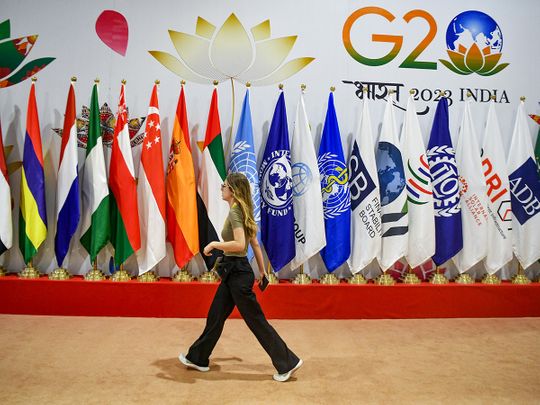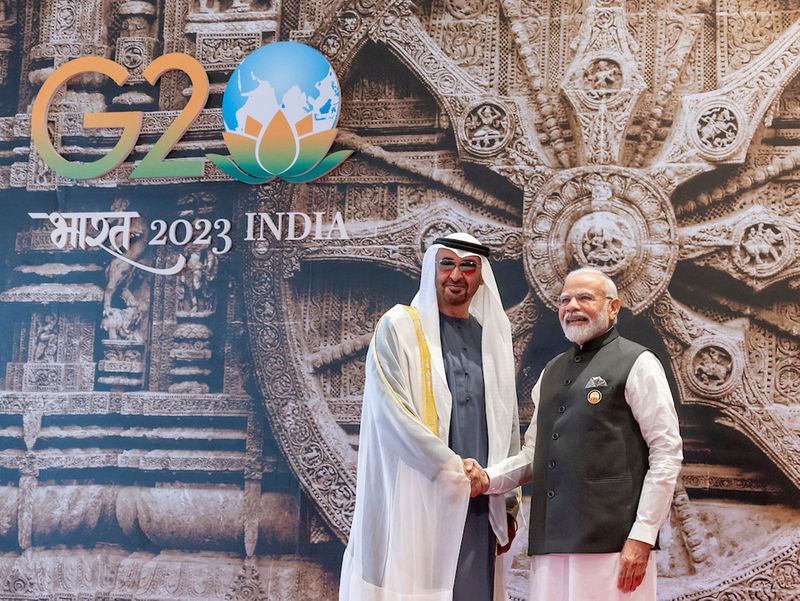
India has surprised the world by leading in the development and deployment of Digital Public Infrastructure (DPI). Rather than just replacing paper forms with digital ones, India made a massive leap in how the government works and delivers services.
The Aadhar system identifies a billion people with biometrics, and UPI enables real-time payments. This isn’t just about speed and convenience; it’s about fundamentally changing how the government operates. Bureaucracy becomes leaner, operational costs drop, and corruption is more difficult to pull off. The state becomes more efficient and agile, able to adapt quickly because it operates on a data-driven platform that fosters trust.
Through initiatives like JAM (Jan Dhan, Aadhar, Mobile) trinity, within 6 years, India has achieved a remarkable 80% financial inclusion rate from a meagre 35 per cent in 2011 — a feat that would have taken nearly five decades without a DPI approach.
The sprawling architecture of the India Stack — incorporating over 50 crore Jan Dhan bank accounts, 1.3 billion Aadhar identities, and a network of 800 million mobile connections — embodies an inclusive vision that transcends mere statistics.
Moreover, the nation’s Unified Payments Interface (UPI) has set a global precedent, facilitating 91 billion digital transactions in 2022 alone, marking an incredible ascent from just 1.2 billion in 2014. More than 9.41 billion transactions valuing about Rs14.89 trillion were transacted in May 2023 alone.
India’s digital advancements, as underscored by the country’s proficiency in IT, enabled the creation of Aadhaar in-house with support from the private sector. This step was not merely to circumvent software costs but to exercise control, preventing issues like vendor lock-in and ensuring adaptability.
Yet, this innovation required substantial resources. The government then harnessed this digital platform for its social programs, propelling tech uptake. The interdependence between DPI and its users amplifies its value: as more providers use digital IDs, it spurs more people to get one.
With tools like UPI making adoption more affordable and attractive, and Direct Benefit Transfers pushing individuals to participate, the government ensures both wider acceptance and trust in the digital structure. India’s Account Aggregator (AA) Framework boosts data infrastructure by allowing consent-based data sharing.

The system enhances operational efficiency, slashing costs and complexity for private firms. For some nonbank financial companies, the AA ecosystem in India has led to an 8% uptick in SME lending conversion, 65% depreciation cost savings, and a 66% reduction in fraud detection expenses according to the World Bank.
The shifting paradigm, eloquently encapsulated by Marshall McLuhan’s “The medium is the message,” signifies that technology doesn’t just serve society; it sculpts it. This resonates with Manuel Castells’ insights on tech’s societal role. With these advancements, India presents a model for the globe, indicating that DPI can enhance governance while simplifying citizens’ lives.
This expertise is being shared with regions like Africa, Europe, and South America. More than mere tech transfer, it exemplifies South-South cooperation, vital for the shared self-reliance of developing nations. Moreover, digital partnerships, including those with nations like the US, allow India to export its tech prowess while building a community where nations share their experiences in instituting digital public assets.
Against this backdrop, India has played a crucial role in influencing the G20s Digital Public Infrastructure Framework. The outcome document of Digital Economy Ministers Meeting is an eye opener and worth quoting.
“India has nudged G20 to adopt a definition of DPI. One should quote it- “Under the Indian Presidency’s initiative, we recognise that digital public infrastructure, hereinafter referred to as DPI, is described as a set of shared digital systems that should be secure and interoperable, and can be built on open standards and specifications to deliver and provide equitable access to public and / or private services at societal scale and are governed by applicable legal frameworks and enabling rules to drive development, inclusion, innovation, trust, and competition and respect human rights and fundamental freedoms”.
Technology, Governance, and Community
The G20 Framework for Systems of DPI, structured around three core pillars — Technology, Governance, and Community — provides a comprehensive approach to digital transformation. The technology pillar emphasises building flexible and interoperable systems for sectors like health and finance, while the governance pillar integrates trust into digital interactions and safeguards individual rights.
Meanwhile, the community pillar emphasises the importance of engagement from all societal sectors. Under the Indian Presidency, the G20’s detailed framework addresses inclusivity, interoperability, and scalability, reflecting India’s DPI initiatives. By promoting user-centric design, strong governance, and community participation, the G20 ensures the sustainability and widespread adoption of digital systems.
Drawing inspiration from India’s successful digital endeavours like Aadhaar and UPI, the G20 framework champions a comprehensive approach to digital innovation. These initiatives showcase how simplistic digital designs can spawn a plethora of services, spurring economic growth and inclusivity. The framework also underlines the importance of ethical considerations, including data privacy and intellectual property rights.
The inclusion of transparency, public welfare, and grievance redressal mechanisms highlights the emphasis on ensuring the public’s well-being. The G20’s endorsement of this strategy represents a unified effort to harness technology for sustainable growth and development, presenting a versatile blueprint for global nations to sculpt their digital landscapes.
The G20’s adoption of the Digital Public Infrastructure Framework, under India’s Presidency, marks a global shift towards digital transformation merging technology with ethics. Going beyond conventional infrastructure, it emphasises community engagement, transparency, and data privacy standards.
This isn’t merely guidelines; it’s a blueprint for modernising global governance. India’s success stories provide a beacon for the global south, steering nations towards a digital, inclusive era.
Aditya Sinha is Officer on Special Duty, Research, Economic Advisory Council to India's Prime Minister. Tweets @adityasinha004. Views Personal.






